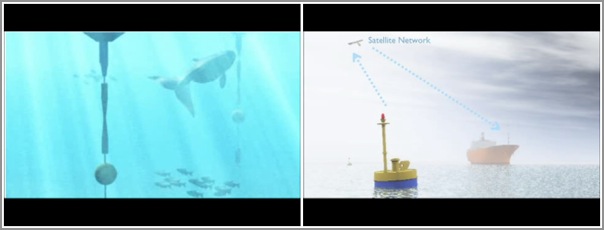Trump Tariffs on Russia’s Oil Buyers Bring Economic, Political Risks
From punishing Brazil to trying to curb imports of fentanyl, U.S. President Donald Trump has wielded the threat of tariffs as an all-purpose foreign policy weapon.
* UPDATE in response to NOAA’s Ship Strike Reduction Rule
NOAA has moved a step forward in implementing it’s Ship Strike Reduction Rule, which aims to reduce the number of North Atlantic right whales injured or killed from collisions with large ships.
The final environmental impact statement (EIS), outlines 6 alternatives including a vessel speed restriction of 10 knots or less in designated areas along the east coast of the US, the preferred alternative by NOAA.
With approximately 300 North Atlantic right whales left in existence, they are among the most endangered whales in the world. Slow moving right whales are highly vulnerable to ship collisions, since their migration route crosses major East Coast shipping lanes. It is estimated that 1 to 2 right whales are killed per year due to collision with large ships.
Below is a April 12th gCaptain post that explains a new technology that can used to help save these endangered species of whales.
* ORIGINAL POST

The Boston Globe tells us of a new undersea system to help ships avoid right whales. They write:

Scientists have developed a cutting-edge underwater listening system to protect the creatures from their number one killer: ships. The Massachusetts Bay network can track right whales by their signature call – and in as little as 20 minutes warn mariners to slow if they’re too close.
The devices are also giving scientists unprecedented insight into how the creatures change behavior to respond to the cacophony of man-made noises in the bay.
“We need to listen to these whales” to save them, said Christopher W. Clark, director of Cornell University’s Bioacoustics Research Program, which developed the technology with Woods Hole Oceanographic Institution.
Clarks said an increasing number of pipelines, cruise ships, tankers, and construction projects are drowning out the whales’ soft calls, making it difficult for them to connect. Clark has evidence that the whales simply don’t “whoop” when the bay gets too noisy.
The listening system, which is estimated to cost $47 million over the 25- to 40-year life of the project, is initially being paid for by Excelerate Energy, which recently finished construction of New England’s first offshore liquefied natural gas port, 13 miles southeast of Gloucester. If a second proposed port is built nearby, it will share the costs of the network. Federal officials demanded the monitoring system because vessels delivering gas will steam through the whale-laden sanctuary. Continue Reading….
Visit Listenforwhales.com for the full details. (Thanks Kurt)

Sign up for gCaptain’s newsletter and never miss an update

Subscribe to gCaptain Daily and stay informed with the latest global maritime and offshore news


Stay informed with the latest maritime and offshore news, delivered daily straight to your inbox
Essential news coupled with the finest maritime content sourced from across the globe.
Sign Up